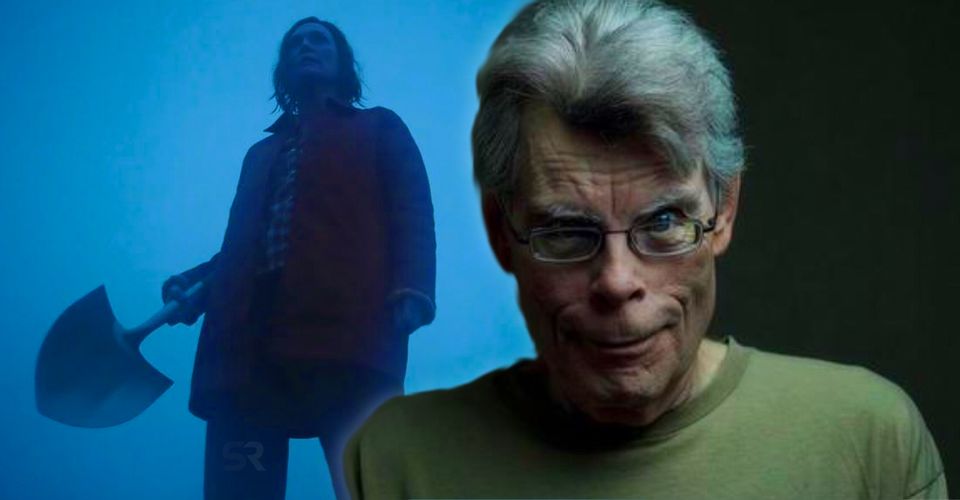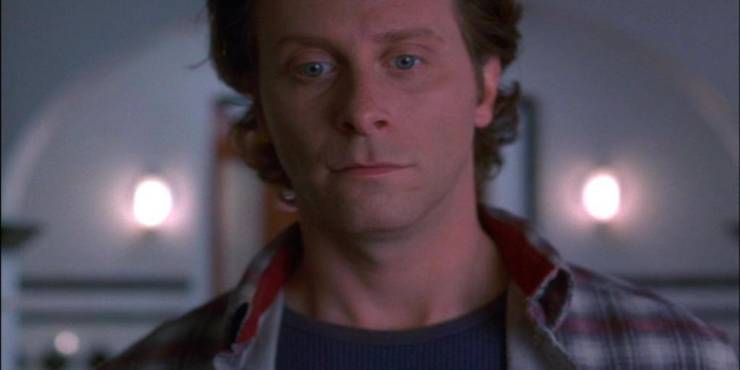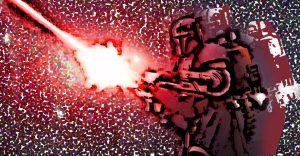Why So Many of Stephen King’s Protagonists Are Writers

Apple TV miniseries Lisey’s Story is the latest in a long line of Stephen King adaptations that see the writer use a fellow author as a protagonist, but why does King rely on this trope so often throughout his oeuvre? Released in 1974, the teen horror novel Carrie was a bestseller that earned its author Stephen King a massive advance and worldwide acclaim. The novel and its successful movie adaptation launched King’s literary career into the stratosphere, and in the decades since, King has become one of the biggest names in genre fiction.
Many of King’s works touch on similar themes. A lot of them are set in small Maine towns, many feature over-zealous religious fanatics and bullies as their human antagonists, and a lot of them incorporate some form of horror (usually, but not always, supernatural) into their plot. However, from The Shining to It, one of King’s most infamous habits is making his main characters writers.
The trope occurs in the author’s 2006 novel Lisey’s Story, recently adapted by AppleTV. However, this is far from the only time that the master of horror has gotten flack for making an important character an author or writer like himself. From The Shining to Salem’s Lot to The Tommyknockers, to Misery, to Desperation, to innumerable examples from his short stories, it is fair to say that King has often used writers as his protagonists in both beloved and dismissed outings. However, this is not a case of lazy self-insert character creation. As proven by a closer look at King’s movie adaptations, his writer characters often allow King to comment obliquely on fan culture, writing itself, the divide between fiction and reality, and the blurring of those lines.
Writer Characters Let King Ruminate On Writing

The opening scenes of It Chapter 2 introduce the adult version of Bill Denborough as a successful writer who fears he can’t script an ending to save his life. The cute meta-joke allowed King to address his issue with endings – something many critics have pulled him up on – without taking viewers out of the movie. Thus, the author can touch on real-life insecurity without making the character an obvious self-insert. In a more serious case, King famously disliked the cold, blackly comic tone of Kubrick’s The Shining adaptation, as the more personal elements of the story led the author to script his own miniseries adaptation of the novel in 1997.
The Shining and its belated sequel Dr. Sleep let King write about his struggles with addiction and parenthood without lapsing into autobiography, and making the character an author provides just enough connection between Torrance and King for viewers to make a connection, but also maintain distance. The pair share similarities, and while Jack’s violent temper and deteriorating mental state allowed King to externalize his fears and anxieties about failing as a father, Jack’s work as a writer underlines and reinforces his connection to King. Thus, King can discuss the struggle of balancing writing and parenthood while struggling with tackling an addiction while also telling a dark ghost story with a characteristically bleak ending that plunges into depths too dark for any autobiography.
Writer Character Also Let King Address Fans

Referenced in everything from The Simpsons to Rick & Morty, Stephen King is a genre legend who has a massive fanbase worldwide. However, with this success comes the strange phenomenon of parasocial relationships: one-sided attachments where fans feel they are close to the author, despite King never having even met them in real life. Making Misery’s hero Paul Sheldon a bestselling romance writer lets King comment on these issues of fame, fandom, and balancing public and private life without directly discussing his experiences as a legend of genre writing. Changing the genre that the hero writes in, but ensuring that it is still a massively commercially successful genre that is often looked down on by critics, allowed King to make Paul Sheldon both a self-insert and a wholly separate entity from himself, and let him use his tormentor Annie Wilkes as a critique of both obsessive, demanding fans, and his cocaine habit at the time of writing.
The Split Personalities Of King’s Writers

As epitomized in The Stand, the struggle between good and evil is central to much of Stephen King’s work. However, a lot of the writer’s talent for creating effective psychological horror stems from his ability to combine both of these in single characters, creating antiheroes who don’t fit the traditional hero or villain role. Often, making the main character a writer acts as metaphorical shorthand to show that they have another side and can switch between two selves, much like the agreeable King can slip into nightmarish environs to come up with horror stories despite being an otherwise amiable person.
Both The Dark Half and the short story “Secret Window, Secret Garden” (later adapted as 2004’s Secret Window) feature King “heroes” who are authors and have secret dark sides that they don’t even know the extent of. Unlike Pennywise the Clown and Randall Flagg, the villains of these stories aren’t external threats but rather part of the characters themselves. The fact that both heroes are authors, as well as monsters, let King literalize the author’s struggle between accessing a fictional world and making it believable, and becoming lost in it and losing touch with reality. This also lets King address the disparity between his own macabre stories and the gregarious, warm real-world personality he is famous for.
Many of King’s Characters Rewrite Reality

Whether it’s as subtle as Paul Sheldon changing Misery’s fate to save his own skin or as obvious as King inserting himself as a character in the Dark Tower mythos, the author’s characters often rewrite reality in a meta sense. As a result, it makes sense for these protagonists to be experienced at this process, a point made most obviously in the short story “Word Processor of the Gods” which sees a writer literally type himself up a better life. As a lot of King’s characters are called upon to rewrite reality, whether this is a literal or metaphorical achievement, making them authors allows the writer to portray creativity as a liberating force throughout his oeuvre. As seen in the recent adaptation of Lisey’s Story, Stephen King‘s writing portrays the world as a scary place wherein comfort should be found where it can be, and the ability of some characters to reshape their fate is reinforced by them working as writers.
About The Author


















